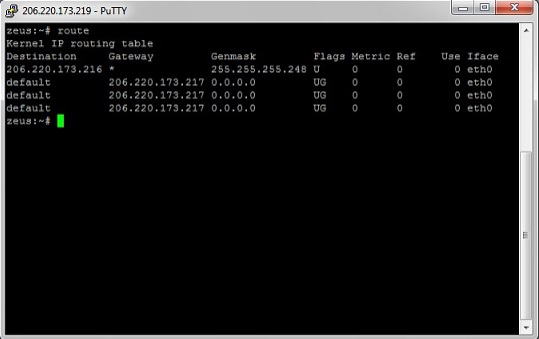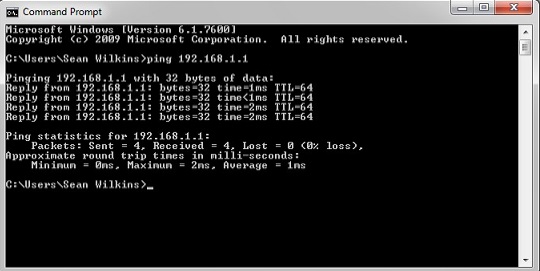Some of the important commands useful in trouble shooting TCP/IP networks are:
NBTSTAT : This utility displays current NetBIOS over TCP/IP connections, and display NetBIOS name cache. Netstat displays active TCP connections, ports on which the computer is listening, Ethernet statistics, the IP routing table, IPv4 statistics, and IPv6 statistics. Used without parameters, netstat displays active TCP connections. NETSTAT is used to review all inbound / outbound TCP/IP connection. Nbtstat is designed to help troubleshoot NetBIOS name resolution problems. When a network is functioning normally, NetBIOS over TCP/IP (NetBT) resolves NetBIOS names to IP addresses. The nbtstat command removes and corrects preloaded entries using a number of case-sensitive switches.
NETSTAT: netstat stands for network statistics. This command displays incoming and outgoing network connections as well as other network information. Displays protocol statistics and current TCP/IP connections since the server was last booted.
TRACERT: Used to determine which route a packet takes to reach its destination from source. IPCONFIG Used to display Windows IP configuration information. TRACERT command can be used to determine the path that a packet takes while traversing on the network before reaching the destination.

NSLOOKUP: This utility enables users to interact with a DNS server and display resource records. The nslookup command will look up the IP addresses associated with a domain name.
nslookup also allows you to perform a reverse lookup to find the domain name associated with an IP address. Displays information that you can use to diagnose Domain Name System (DNS) infrastructure. The Nslookup command-line tool is available only if you have installed the TCP/IP protocol.
ROUTE: Used to display and edit static routing tables. Displays and manipulates route information.

Ping: This command can be used to verify whether the target ip address or host name is present. You need to specify the target IP address or host name.
You can ping the loop back address at 127.0.0.1. A response ensures that the TCP/IP stack is installed properly on your computer.
Running a command like "ping" or "ipconfig" will open the command screen. However, the command screen closes soon after the execution of the command. If you intend to observe the results of any such command, you need to open the DOS screen by going to Program Files | Accessories | Command Prompt.

IPCONFIG: gives the current IP address assigned to the Windows 8 computer. Winipconfig command is not available in Windows XP, 7 and later versions. Displays TCP/IP configuration values, including IP address, subnet mask, and default gateway. It is used to find out your current TCP/IP settings. With IPCONFIG you can find out your IP Address, find your Default Gateway and find your Subnet Mask. This is a very handy network tool for finding your local IP address. Ipconfig (sometimes written as IPCONFIG) is a command line tool used to control the network connections on Windows NT/2000/XP machines. There are three main commands: "all", "release", and "renew". Ipconfig displays all current TCP/IP network configuration values and refreshes Dynamic Host Configuration Protocol (DHCP) and Domain Name System (DNS) settings. Used without parameters, ipconfig displays the IP address, subnet mask, and default gateway for all adapters.
ipconfig /all: To display all your IP information for all adapters. With ipconfig /all you can also find out your DNS Server and MAC Address of your network card. This will show your full TCP/IP configuration for all adapters on your Windows machine. You can find out your own IP Address as well as your default gateway.
Related commands that are often used:
ipconfig /release: To release your current IP information and obtain a new IP Address from the DHCP server.
ipconfig /renew: Used to renew your IP Address if you have it set to obtain IP Address automatically.
ipconfig /displaydns : This shows your current DNS Resolver Cache Logs.
ipconfig /flushdns : This flushes or clears your current DNS Resolver Cache Logs.
Peer-to-peer model is best suited when you need to share files and folders among others in your office. If the number of networked computers becomes very large or if the security of data is very important, Client-Server model is recommended.
| /? | Display this help message |
| /all | Display full configuration information. |
| /release | Release the IPv4 address for the specified adapter. |
| /release6 | Release the IPv6 address for the specified adapter. |
| /renew | Renew the IPv4 address for the specified adapter. |
| /renew6 | Renew the IPv6 address for the specified adapter. |
| /flushdns | Purges the DNS Resolver cache. |
| /registerdns | Refreshes all DHCP leases and re-registers DNS names |
| /displaydns | Display the contents of the DNS Resolver Cache. |
| /showclassid | Displays all the dhcp class IDs allowed for adapter. |
| /setclassid | Modifies the dhcp class id. |
| /showclassid6 | Displays all the IPv6 DHCP class IDs allowed for adapter |
| /setclassid6 | Modifies the IPv6 DHCP class id. |
Given below are the basic commands that are used with FTP:
get : to copy one file from the remote machine to the local machine
mget : to copy multiple files from the remote machine to the local machine;
put : to copy one file from the local machine to the remote machine
mput : to copy multiple files from the local machine to the remote machine;
p : is used to request help or information about the FTP commands, and ls is used to list directory contents.
Diskpart command line function can be used to manage disk drives in Vista, Win 7/8. Use the command with caution.
System File Checker (sfc) Scans and verifies the versions of all protected system files after you restart your computer.
Wi-Fi Troubleshooting:
If your smartphone Wi-Fi does not remain connected, the problem may be that it is configured to drop the connection during sleep or lock mode. Just go to Wi-Fi > Settings > Menu > Advanced and choose to stay connected to Wi-Fi during sleep.
If you sign up with a mobile carrier network, you might need to configure your phone's APN settings.
The first thing you'll need to do is find the right APN settings for the network you want to use. You'll be able to find these at the support pages at the carrier website.
For example, the settings may look like:
NAME: straight talk APN: tfdata PORT: 80 MMSC: http://mms-tf.net MMS PROXY: mms3.tracfone.com
Once you have this information at hand, take your phone.
To get started configuring APN settings, go to Settings -> Wireless & Networks -> More -> Mobile Networks -> Access Point Names.
Once you've found your mobile network settings, the rest will be the same on all devices. You're looking for the "Access Point Names" section. Tap to open it.
If you don't see the APN of your carrier, make a new APN, and have the settings entered AS IS. Don't have to worry about blank entries as these entries, most probably, not required by the carrier.
Once you have the settings provided by your carrier entered, you need to save the APN. You do that by pressing the three dots in the upper right (or the menu key if your phone has one) and selecting the "Save" option.
Once your APN information is saved, go back one screen to the list of APNs and tap the new APN settings you just entered to make them active.
Note that the menu options may change slightly from one version of Android to another.
Setting passcodes on mobile devices is the most basic security requirement for any mobile device to be allowed into a work environment. Passcodes require the user to enter a passphrase to unlock the device. Devices can also be configured to lock automatically after a configurable timeout period. (Typically, five minutes is ideal.)

